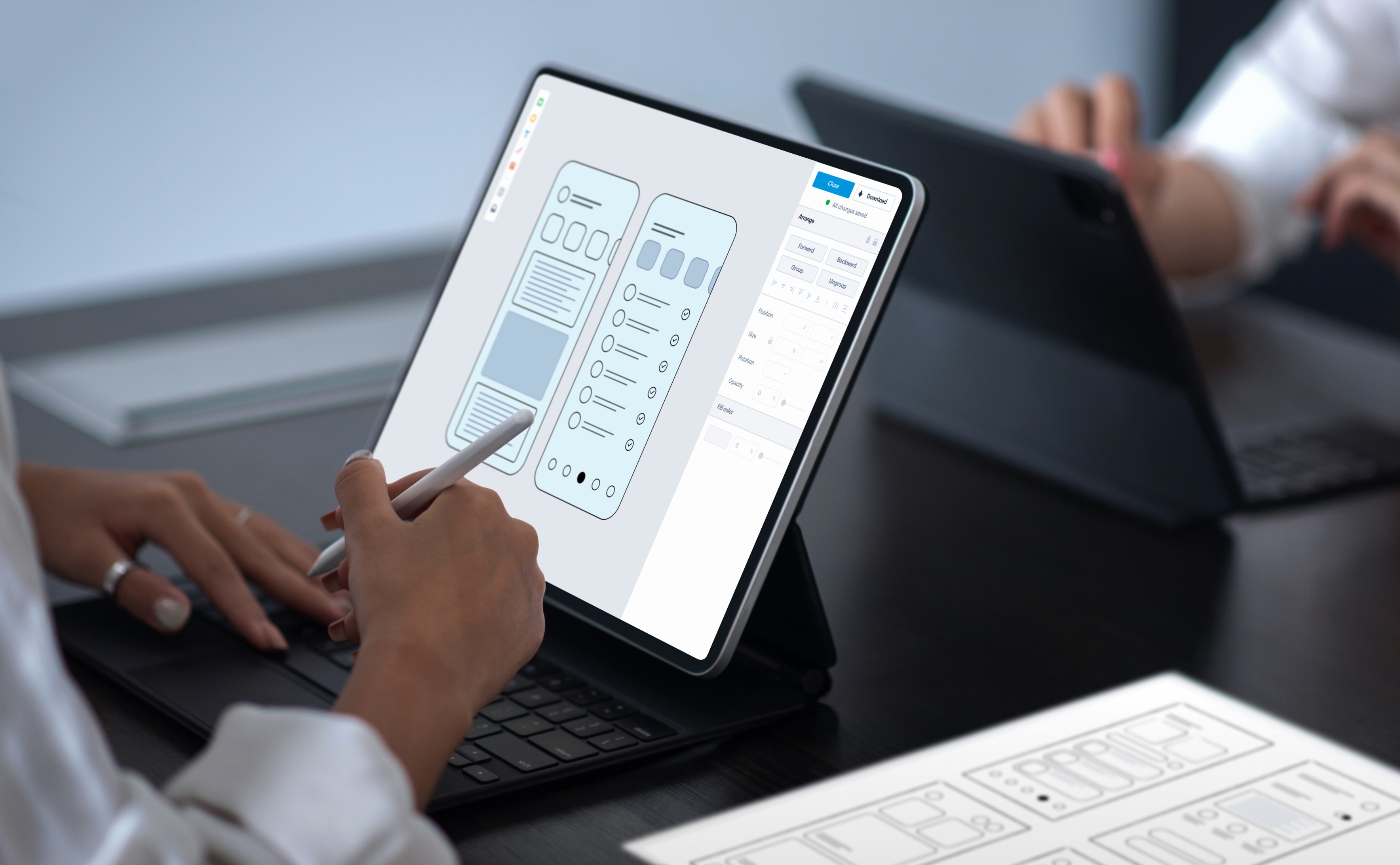iOS App Development: How to Make Your First iOS App

In this mobile environment, iOS has established its prominence as users rely highly on iPhones/iPads and the apps fulfil their expectations. Apple’s iOS operating system gives utmost importance to user experience, security, and quality.
In the app store, about 2 million apps are given life by various people, including young children, to enterprises for business development. iOS has more than 1.46 billion potential users and is the best place for applications to thrive.
More than 20 million developers are registered on iOS. Also, there are 1.6 million active Objective-C developers and about 2.1 million Swift developers, the primary iOS development languages. Does the market leave space for more iOS developers? Yes; mobile development is still one of the most remarkable business areas that faces a considerable skill gap.
In this blog, you’ll have a step-by-step guide to creating your first iOS app. You will know what steps you must follow and how you should take it ahead. Let’s get started.
How to Develop an iOS App?
Once you have a new app idea, it is time to begin development. You can choose from the below three options to bring the iOS app to life:
1. iOS App Builders
With the help of no-code app builders, you can understand how to get into the Apple Store. This applies even to enthusiasts with no coding expertise who gain sub-par outcomes.
2. Learn iOS Development
If you wish to develop an iOS app alone or want to know how to build iOS apps to be a competitive software developer, you can take weeks to months to be an expert to start building an app. However, the iOS development learning curve might take time as you adopt the best practices.
3. Find an iOS developer or an iOS development agency
Getting an app developed quickly can be successful or end up in failure. The best way to develop an iOS app could be to hire an iPhone app developer or hire mobile app developers who can handle the entire development process efficiently. An iOS app development agency with a team of expert app developers, UX services, and years of expertise can help you develop an iOS app as per your expectations.
Need expert help with your iOS app idea?
Let's talkLoading...
Basic Requirements to Develop an iOS App
Mac System
Start working with the current Xcode version. Firstly, you need a Mac computer using the advanced Mac OS version. You can also go for a Mac Mini. Attach it to your monitor screen and get ready. The latest Mac Mini has 8 GB of memory and comes with an M1 or M2 chip with high-end processing power. These chips outperform the other models, like the Core i5, offering top-notch performance, faster build times, and performance with seamless iPhone app development.
Register for Developer Account
Registering for a Developer Account is free. Once you successfully register, you can gain permission for Xcode download, access iOS SDK and development videos, and access technical resources.
You can then register yourself at the developer website. It offers a step-by-step guide on the iOS platform or Apple’s official website. You just need to create an Apple ID (use the existing one) and include every piece of information in the personal profile.
Installation of Xcode
Xcode lets you create iPhone and iPad applications. Apple offers IDE (Integrated Development Environment) Xcode. Xcode has everything you need to get your app development off the ground.
It comes with an advanced version of the iOS SDK (Software Development Kit), a UI editor, a built-in source code editor, debugging tools, and more. Xcode’s built-in iOS Simulator lets developers test apps on simulated devices without requiring a physical iOS device. To download Xcode, you just have to launch the Mac App Store on the computer.
If you are using the latest Mac OS version, you should access the Mac App Store icon. If you can't find it, you might have to update your Mac OS. Search for Xcode on the Mac App Store to install it. Download and install Xcode. Once the installation is complete, Apple Xcode will be available on the launchpad.
Want to turn your app concept into reality?
Let's talkLoading...
How to Develop an iOS App: Steps Involved
1. Set Up Your Development Environment
To develop an iOS app, you should first set up the development environment. This starts with gathering the necessary tools. Xcode is a major iPhone app development tool for Apple’s official Integrated Development Environment. You can directly download Xcode from the Mac App Store. After installation, take time to understand its interface, as this is where you will invest most of your development time.
2. Register for an Apple Developer Account
Next, you need to register for an Apple Developer Account. You can test your app on a real device or submit it eventually to the app store. Its free trial enables access to all features, including app distribution, with a yearly fee.
3. Design Your App’s User Interface
With the environment set, you can begin developing your app. Launch Xcode and begin a new project. This gives you a basic template to start with. You can begin UI design for your app. Xcode offers a visual interface designer in which you can drag and drop different UI elements such as labels, buttons, and images. This visual representation is termed a storyboard. SwiftUI is Apple’s latest framework to build user interfaces along all Apple platforms using a declarative Swift syntax. This eases UI development and makes it highly intuitive and faster, earning popularity for real-time design previews and seamless integration.
4. Enhance Code and Functionality with Swift
An app is not only about how it appears but also about functionality. Swift is highly useful here, which is the recommended language by Apple for iOS development. You can find Swift files linked with the various parts of your app within Xcode. In this, you can write the code explaining what occurs when a user interacts with the elements accessible in the dashboard.
5. Test Your iOS App
Xcode incorporates a simulator that mimics the behaviour of different iOS devices. It lets you understand how your app runs on an iPad or an iPhone without requiring a physical device. But, it is always a great idea to test on a real device if possible.
6. Deploy to the App Store
Once you’re satisfied with the design and functionality, and following the rigorous testing, you can plan to deploy the app. Before app store submission, make sure the app sticks to Apple’s guidelines. Use engaging screenshots, detailed descriptions, and necessary metadata to prepare the app’s listing. After submission, Apple reviews the app, and once it meets all the required standards, it gets published on the App Store.
A Walk Through Apple’s Design and Development Guidelines
Apple won’t just let everyone publish apps on the app store, as they give importance to the reputation for the best products. If you need your software to succeed in the app store, you should follow the guidelines. Let’s explore how to create an iOS app that iOS customers will find interesting:
Before you upload the app to the store, test it for defects and crashes. But, what are the other guidelines the App Store has reserved for you?
1. Before App Submission: To help the app run smoothly, Apple recommends certain guidelines, including app testing for crashes and bugs, ensuring the accuracy of metadata, offering app reviews, providing backend services, and incorporating explanations of features and in-app purchases.
2. Safety Guidelines: While downloading an app from the App Store, users should ensure that it is safe to do so that it doesn’t damage the device or contain any upsetting content, and it will not put them in trouble.
Hence, Apple points out the major pitfalls as follows:
- Apps that hold offensive content seem to be creepy.
- User-generated content that could infringe intellectual property or anonymous bullying.
- Apps that can cause physical harm and propose inaccurate data.
- Apps for kids but don’t follow compliance with parental gates or privacy laws.
- Apps that don’t deploy adequate security measures.
- Apps that use outdated and inaccurate information.
Hence, to send apps across for review, ensure your app follows all safety regulations.
3. Performance Guidelines
Apple recommends the submission of apps that are complete versions—not beta, trial, or demo—and should hold relevant metadata including fully working URLs. Customers should also understand what they get while they purchase or download your app. Hence, make sure every app metadata, which includes app description, privacy information, previews, and images.
Apple recommends building universal apps that run on all iOS devices when considering hardware compatibility. Based on software compatibility, the application should have only public APIs, the ideal framework, be highly functional, and not transmit viruses.
4. Payments Regulations
Monetisation is something you wish to come across in the App Store if you didn’t make the app only for satisfaction. Therefore, always keep in mind that your business strategy should be ideal for the Apple moderators. If not, mention it in the metadata or App Review remarks.
It would accelerate and slow down the review and might end up in rejection if it’s hard to understand how the app works and in-app purchases aren’t that obvious. Also, unreasonable prices can be an additional reason for app rejection.
Avoid Major App Rejections
This is the biggest advantage if you can overcome the most demanding review process and get the gatekeepers to approve your app. For instance, you can win more leads as users find your app—this means high revenue. Unfortunately, few applications are denied immediately.
Apple wants all digital content to be sold using its iTunes-based purchase system. If your app allows additional payments for digital content, it gets simply rejected as Apple only permits digital subscriptions and one-time purchases.
This is why users can’t buy new e-books on Kindle. The store rejected Dropbox as it features links to get additional space. It is only a single instance of why the store rejects certain apps out of many.
- Apple doesn’t think too much about apps with complete system failures or major risks.
- It just rejects apps that don’t offer smooth operation, no matter how interesting your software is.
- If mobile apps are made for indirect intentions, like giving clients an alternative contact method, the app store might reject it.
- Apple accepts your app only if you provide up-to-date and accurate information for the store.
To be precise, anything that ranges from UI/UX incapabilities, inaccurate description, app copying, lack of standard functionality, misleading users, inappropriate screenshots, and lack of value can make Apple reject your app. To avoid all these, you may refer to the review tips Apple offers.
Apple Design Guidelines
Apple users greatly value simple, inventive, and user-friendly products, and this is what Apple wants to feature on the App Store. That’s why the App Store has minimum design standards. It means applications that offer substandard performances, are copied from an app, or are not functional, don’t get through the standards.
It also means that the iOS applications should adhere to the App Extension Programming Guide. These display customised icons or run codes and use the feature Sign-in with Apple option. Although the core working of Apple’s app review process is a secret, it is easy to understand why some apps get rejected. The way to avoid them is to offer a well-designed, engaging, and good-quality app experience.
Let’s Start Developing Your iOS App
The steps mentioned above can help you build an iOS app with ease, as long as you follow development guidelines for the best results. But, when you have multiple priority tasks to consider or if you have no expertise in app development, choosing to build an app yourself can be time-consuming and complex.
It often demands a steep learning curve and significant resources. However, hiring a reliable iOS app development company can streamline the process, improve quality, security, and efficiency, thus saving you time.
With the help of iOS app development experts, you can validate the app idea and get app development consulting services to make your app successful. If you’re looking for the best iOS development support, you can contact a reliable iOS app development company.
At WAC, we have a dedicated development team working on providing the top iOS app development services to make highly engaging applications and portray your brand values to drive more conversions. To learn more about the mobile app development services we offer, contact us.
Ready to build your first iOS app?
Reach out usLoading...
- Best iOS Architecture Patterns for Your App’s Success
- React Native vs Swift: Which one should you choose for iOS app development?
- SwiftUI vs UIKit: Which iOS UI Framework Should You Choose in 2025
- Swift Vs. Objective-C: Which is the Best Option for the 2025 iOS App Development?
- Top iOS App Development Trends for 2025
Discover Digital Transformation
Please feel free to share your thoughts and we can discuss it over a cup of tea.










